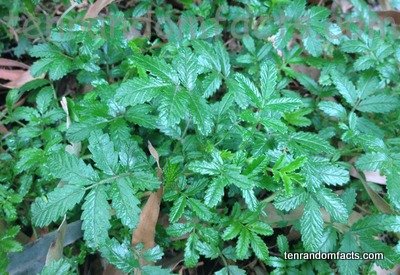Bidgee widgees certainly like to stick to you.
- Bidgee widgees are a species of perennial, flowering plant, native to regions of Australia and New Zealand.
- ‘Bidgee widgees’ are also known as ‘biddy-biddy’, ‘bidi-bidi’, ‘piri-piri-bur’ or, in the native New Zealand language, Maori, ‘piripiri’.
- The scientific name of a bidgee widgee is Acaena novae-zelandiae and it is from the family Rosaceae, the family of roses.
- Bidgee widgees have been introduced into the United States and the United Kingdom, where they are now established and considered a weed in some areas.
- The bidgee widgee plant grows to approximately 10 centimetres (4 inches) in height, with a one metre (39 inches) diameter, and is notable for spreading across the ground.
- Full sun or partial shade is the best growing conditions for bidgee widgees, and they prefer moist soil conditions.
- The tiny, white to green coloured flowers of bidgee widgees, typically form in the spring and summer months in ball shape clusters, that grow above the leaves of the plant on thin stalks.
- Bidgee widgees are commonly utilised in landscaping as a ground cover, for decorative purposes.
- Bidgee widgee flowers develop into spherical burrs that begin with protruding pink to red spikes that change to a brown colour once mature, that are in fact individual seeds that are grouped together to make the spherical shape.
- If brushed against, bidgee widgee seeds or burrs can cling onto substances, such as animal fur or clothing, due to the spiny hooks they possess, which aids their dispersal.
Bibliography:
Acaena novae-zelandiae, 2015, Wikipedia, https://en.wikipedia.org/wiki/Acaena_novae-zelandiae
Acaena novae-zelandiae, n.d, Prestige Plants, http://www.prestigeplants.com.au/www/content/default.aspx?cid=1748
Acaena novae zelandiae, 2016, Bushland Flora, http://www.bushlandflora.com.au/individual_plant.php?p=Acaena%20novae%20zelandiae&uid=1034
Acaena novae-zelandiae Kirk, n.d, PlantNET, http://plantnet.rbgsyd.nsw.gov.au/cgi-bin/NSWfl.pl?page=nswfl&lvl=sp&name=Acaena~novae-zelandiae







How do you eliminate the Bidgee-widgee